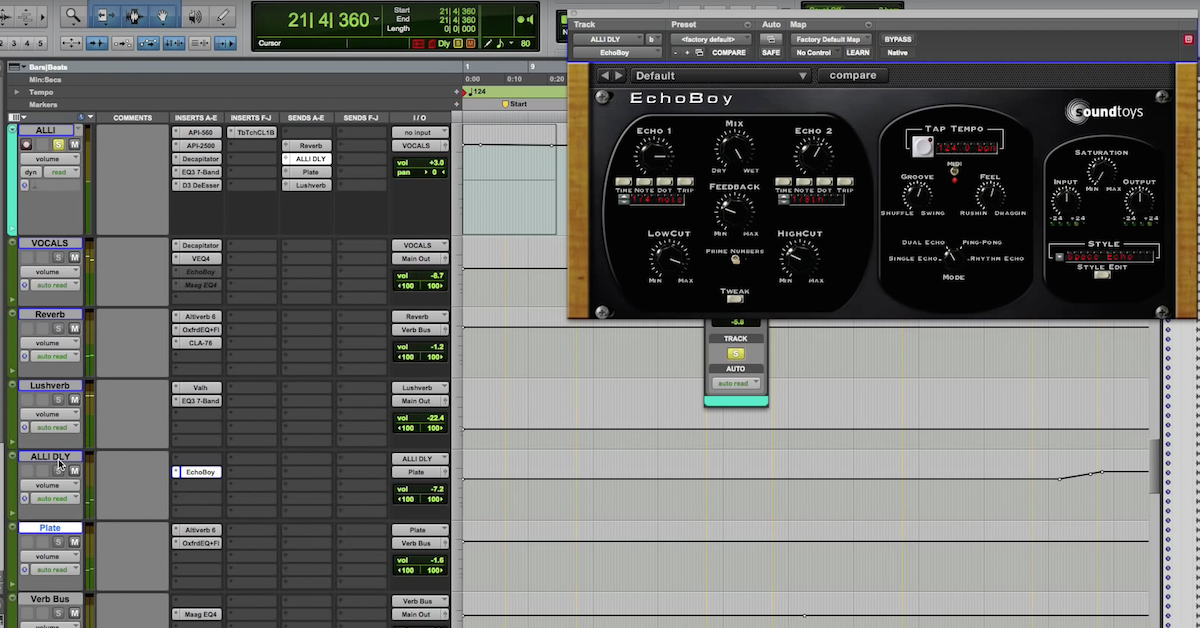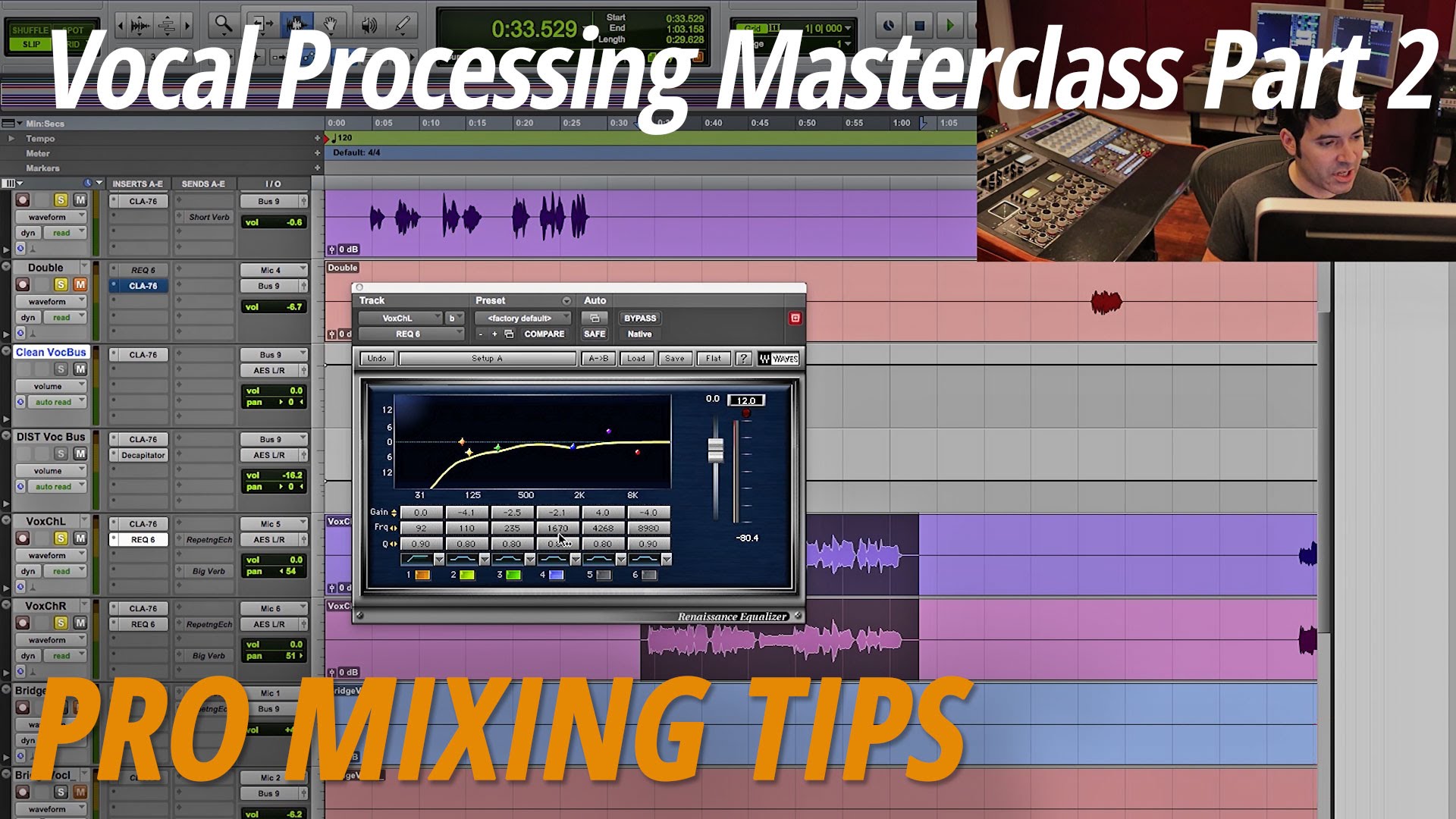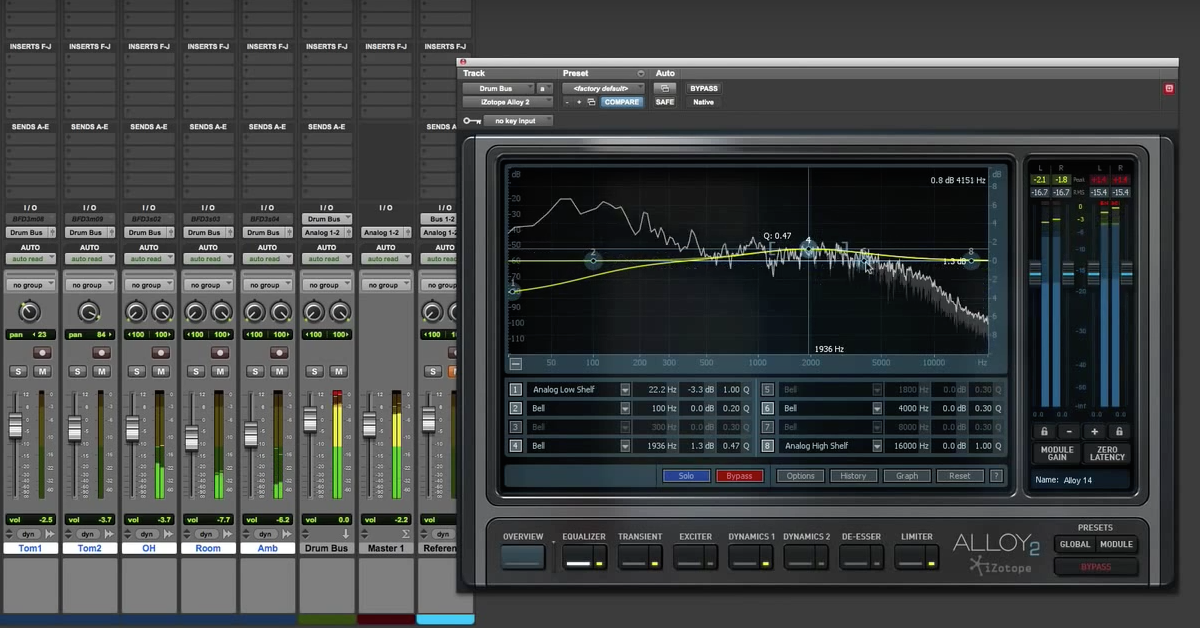How to Create Your Own Vocal Exciter with Stock Plugins
In this video, I’m going to show you how you can create your own vocal exciter audio effect. The idea here is based off a company called Aphex. They have the special product called the “Aural Exciter.” It’s been around for a long time. In fact, there are old vintage hardware units that are sought after by a lot of audio engineers. There are also more modern versions in hardware and software form that are great, too.
Now, in some ways, this effect has been described as kind of doing this mysterious, magical thing when you put a signal through it. In reality though, the concept behind it is nothing more than a parallel distortion, where you use some spectral processing to filter off some of the lows and also shape some of the highs.
What I’m going to do, then, is recreate this kind of effect by using stock plug-ins inside of Pro Tools. Now, you can recreate exactly the kind of processing chain that I’m using by using whatever stock plug-ins come with your digital audio workstation if you’re working in another one.
So let’s get to it. I’m going to be focusing here on the lead vocal, but I’ll play you the whole song so you can hear that vocal in context to begin with.
[song]
Now, for the vocal, what I’m hearing is that it has just the right amount of volume. However, it doesn’t really cut through the mix in a way that I would like.
So, I could just try and reach for an equalizer or a different kind of effect – a compressor – however, you know, in some ways, just those simple effects by themselves won’t be able to accomplish exactly what I’m missing. So in this case, what I’m going to try and do is recreate this kind of exciter effect to help it cut through a little bit more.
So, what I’m going to do in this case is add parallel distortion. I’m going to do this here by using an auxiliary track, but you can do it in lots of different ways. So I’m going to create a second track right next to my lead vocal. This is an auxiliary track that I’ll call “Exciter.” Now, if you want to duplicate the audio track, all that kind of stuff, that’s fair game too.
What I’m going to do is buss the signal over from my lead vocal. This one is empty, buss 5. Let’s turn this up and make the input of this track also buss 5. Initially here, what I’m going to do is actually make my auxiliary send pre. This way, if I start to solo these things, what I’m going to be able to do here is focus just on my parallel path by making this pre-fader so I can mute this channel of my vocal track.
I’m going to send this signal over here and just process it here by adding some distortion and that kind of stuff. I also need to make sure my vocals are going over here into this vocal buss, so I need to send it over there too.
Alright. So let’s just focus on the vocal as it’s going through this exciter track.
[vocals]
Alright. So in this case, what I want to do, even though it sounds weird at first, is I want to roll-off the lows. So I’m going to use just the 1-band equalizer here. This is the stock equalizer in Pro Tools. I’m going to select the high-pass filter. Let’s find a cut-off maybe somewhere around – between 500 and 1000Hz.
[vocals]
Now, one of the nice things about creating a custom effect is you have all of these different parameters in the filtering, in the distortion, that you can adjust. So I’m going to start out from here and then add the other effects, and see if I need to tweak this anymore.
So next up, use the stock distortion effect here – the Harmonic AIR Distortion. Alright. In this case, I have several different kinds of distortion modes that – I’m going to start out with soft, but I can certainly adjust all of these parameters, and in fact dial it in extreme to begin with, and then blend it in more later.
So I’m going to bring in these plug-ins to help shape the sound. I’m also going to duplicate this EQ-3 up here, and drag it down. I’ve got a second version of it here. I’m going to switch this one to a low-pass filter. So you can see my signal chain is going to go in this order: first up is the high-pass filter. It’s going to be somewhere between 500 and 1000Hz. Then I’ve got distortion, and then I’ve got the low-pass filter.
So I need to bring this one up here. Probably going to be 2kHz to 5kHz is when I want to start rolling things off. But I can use the slope here to really dial in the kind of sound that I want.
[vocals]
One thing you have to watch out for is if you let all of the high frequencies pass through, it’s going to sound very sharp and harsh, so that’s the reason why using a low-pass filter is great.
[vocals]
Alright. So even if that sounds very distorted to begin with, remember, this is just going to be blended in in parallel. So I’ve rolled off the lows, you can hear if I keep the lows in there, it sounds way too boomy.
[vocals]
Alright. So now, I’ve got the sound close to what I want. It sounds very harsh, but I know that it’s going to be blended in in context, so let me turn these off for now. I can always come back and tweak it later on.
So instead of having this be pre, I’m going to make this post now. This way any adjustments I make on this track are also going to affect on this track. So I’ll start out actually turning it off.
And blend it in.
You can hear then when it’s in context, I have a lot of control over how much excitement that I want to add in, and it doesn’t even sound like a very dramatic or harsh effect until I start to take it away. So here it is, about the level that I think would work.
[vocals]
All of a sudden, it really starts to sharpen up. Now let’s do it in context of the full mix.
[full mix]
So that’s a great way to add a little bit of extra clarity that you can’t just get by equalizing the top end.
So that’s all I wanted to show you in this video. Keep in mind, though, this is a great effect for vocals, but it has all sorts of other applications. It’s great on acoustic guitar, it’s great on a drum buss… Lots of different things.
So until next time, take care, guys.





